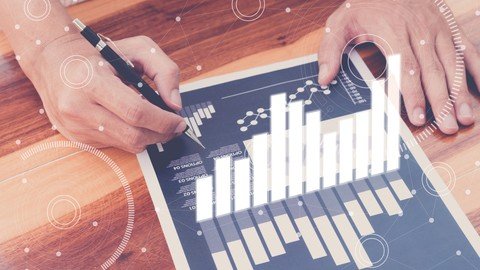Julia Performing Statistical Computations

Last updated 5/2017
MP4 | Video: h264, 1280x720 | Audio: AAC, 44.1 KHz
Language: English | Size: 173.41 MB | Duration: 2h 27m
Mould your programming skills by carrying out dynamic numerical computations with Julia
What you'll learn
Get familiar with the key concepts in Julia
Follow a comprehensive approach to learn Julia programming
Get an extensive coverage of Julia's packages for statistical analysis
Sharpen your skills to work more effectively with your data
Requirements
The software requirements assume you have any of the following OSes: Linux, Windows, or OS X
There are no specific hardware requirements, except that you run and work all your code on a desktop, or a laptop preferably
Description
Julia is a high-performance dynamic programming language for numerical computing. This practical guide to programming with Julia will help you to work with data more efficiently.
This course begins with the important features of Julia to help you quickly refresh your knowledge of functions, modules, and arrays. We'll explore utilizing the Julia language to identify, retrieve, and transform datasets so you can perform efficient data analysis and data manipulation.
You will then learn the concepts of metaprogramming and statistics in Julia.
Moving on, you will learn to build data science models by using several algorithms such as dimensionality reduction, linear discriminant analysis, and so on.
You'll learn to optimize data science programs with parallel computing and memory allocation. You'll get familiar with the concepts of package development and networking to solve numerical problems using the Julia platform.
This course includes sections on identifying and classifying data science problems, data modelling, data analysis, data manipulation, multidimensional arrays, and parallel computing.
By the end of this course, you will acquire the skills to work more effectively with your data.
What am I going to get from this course?
Extract and manage your data efficiently with JuliaExplore the metaprogramming concepts in JuliaPerform statistical analysis with StatsBase.jl and Distributions.jlBuild your data science modelsFind out how to visualize your data with GadflyExplore big data concepts in Julia
What's special about this course?
We've spent the last decade working to help developers stay relevant. The structure of this course is a result of deep and intensive research into what real-world developers need to know in order to be job-ready. We don't spend too long on theory, and focus on practical results so that you can see for yourself how things work in action.
We have combined the best of the following Packt products
Julia Cookbook by Jalem Raj RohitJulia Solutions by Jalem Raj Rohit
Meet your expert instructors
Jalem Raj Rohit is an IIT Jodhpur graduate with a keen interest in machine learning, data science, data analysis, computational statistics, and natural language processing (NLP). Rohit currently works as a senior data scientist at Zomato, also having worked as the first data scientist at Kayako. He is part of the Julia project, where he develops data science models and contributes to the codebase.
Meet your managing editor
This course has been planned and designed for you by me, Shiny Poojary. I'm here to help you be successful every step of the way, and get maximum value out of your course purchase. If you have any questions along the way, you can reach out to me and our author group via the instructor contact feature on Udemy.
Overview
Section 1: Getting Started
Lecture 1 Introduction
Lecture 2 Handling data with CSV files
Lecture 3 Handling data with TSV files
Lecture 4 Working with databases in Julia
Lecture 5 Interacting with the Web
Section 2: Metaprogramming
Lecture 6 Representation of a Julia program
Lecture 7 Symbols and expressions
Lecture 8 Quoting
Lecture 9 Interpolation
Lecture 10 The Eval function
Lecture 11 Macros
Lecture 12 Metaprogramming with DataFrames
Section 3: Statistics with Julia
Lecture 13 Basic statistics concepts
Lecture 14 Deviation metrics
Lecture 15 Sampling
Lecture 16 Correlation analysis
Section 4: Building Data Science Models
Lecture 17 Dimensionality reduction
Lecture 18 Linear discriminant analysis
Lecture 19 Data preprocessing
Lecture 20 Linear regression
Lecture 21 Classification
Lecture 22 Performance evaluation and model selection
Lecture 23 Cross validation
Lecture 24 Distributions
Lecture 25 Time series analysis
Section 5: Working with Visualizations
Lecture 26 Plotting basic arrays
Lecture 27 Plotting dataframes
Lecture 28 Plotting functions
Lecture 29 Exploratory data analytics through plots
Lecture 30 Line plots
Lecture 31 Scatter plots
Lecture 32 Histograms
Lecture 33 Aesthetic customizations
Section 6: Parallel Computing
Lecture 34 Basic concepts of parallel computing
Lecture 35 Data movement
Lecture 36 Parallel maps and loop operations
Lecture 37 Channels
This course is for Julia programmers who want to learn data science right from exploratory analytics to the visualization part.,Anyone who wants to work more effectively with data
Homepage
https://www.udemy.com/course/julia-performing-statistical-computations/Please Help Me Click Connect Icon Below Here and Share News to Social Network | Thanks you !
In today's era of digital learning, access to high-quality educational resources has become more accessible than ever, with a plethora of platforms offering free download video courses in various disciplines. One of the most sought-after categories among learners is the skillshar free video editing course, which provides aspiring creators with the tools and techniques needed to master the art of video production. These courses cover everything from basic editing principles to advanced techniques, empowering individuals to unleash their creativity and produce professional-quality content.




Comments (0)
Users of Guests are not allowed to comment this publication.